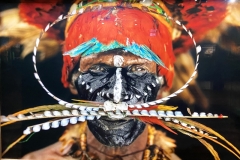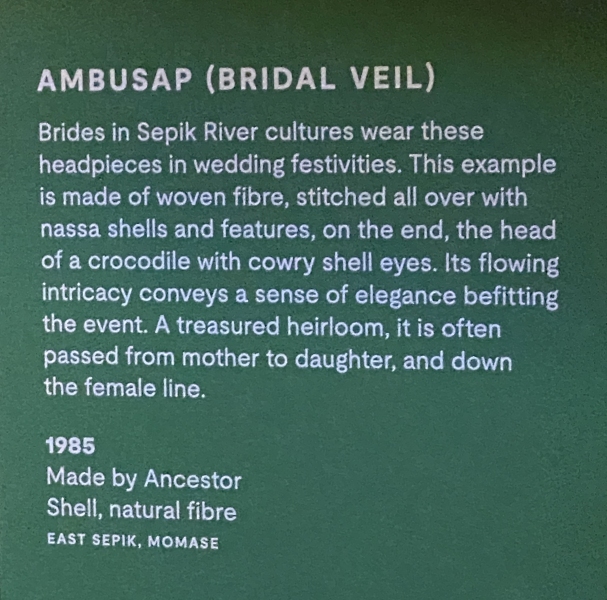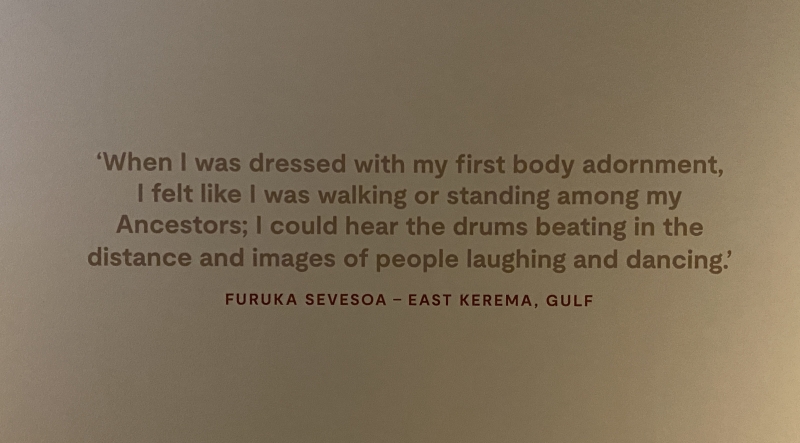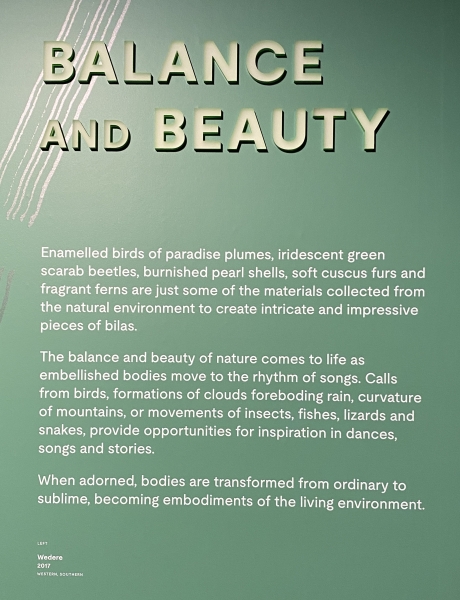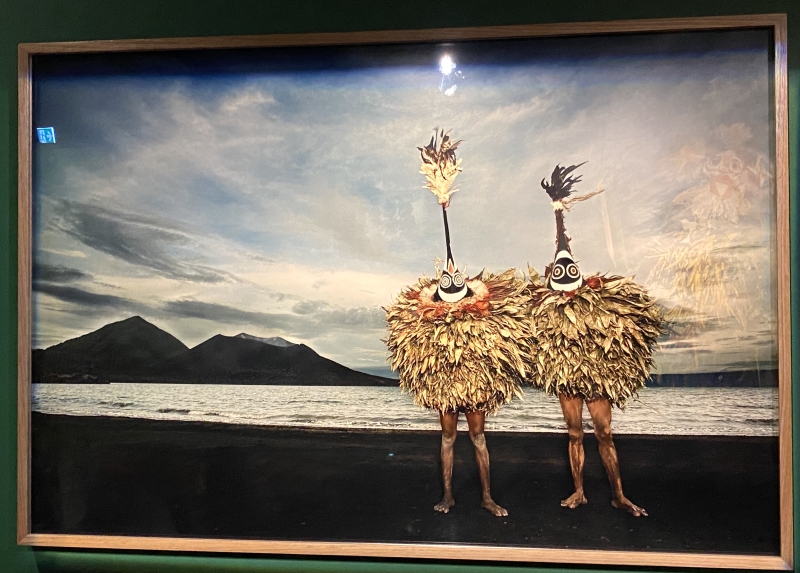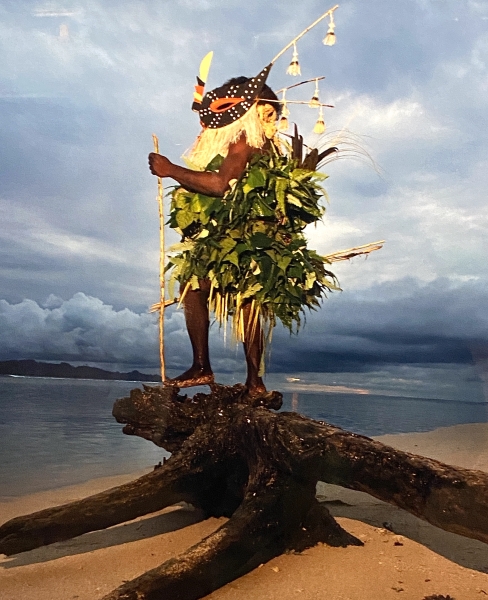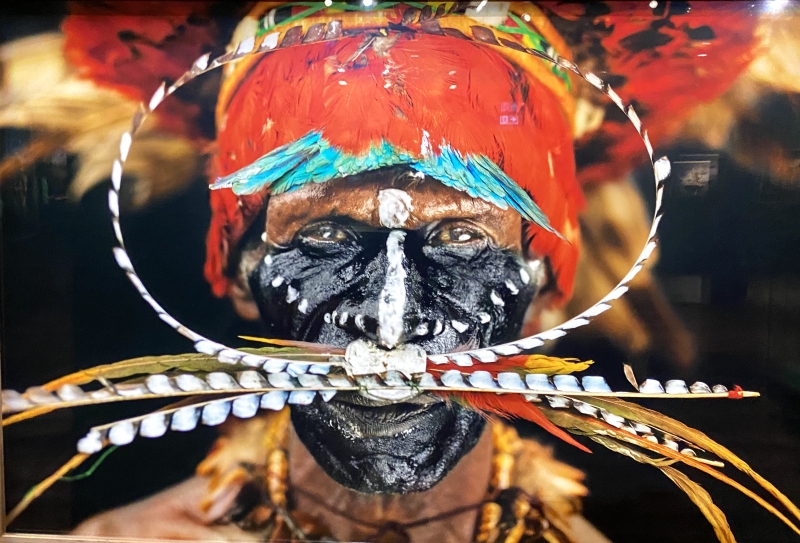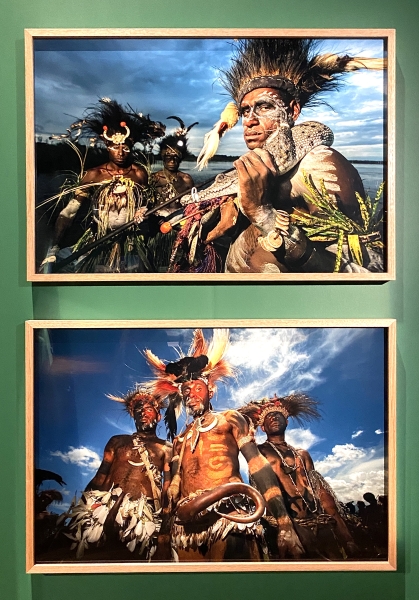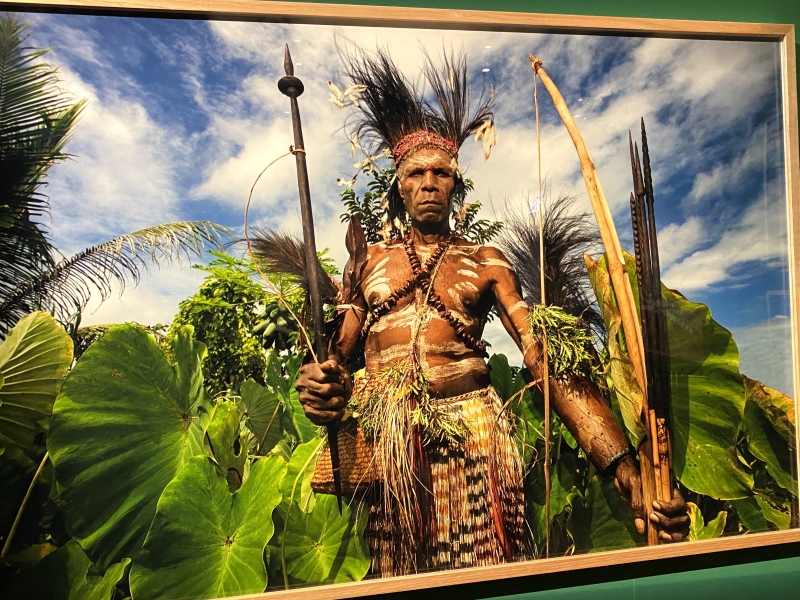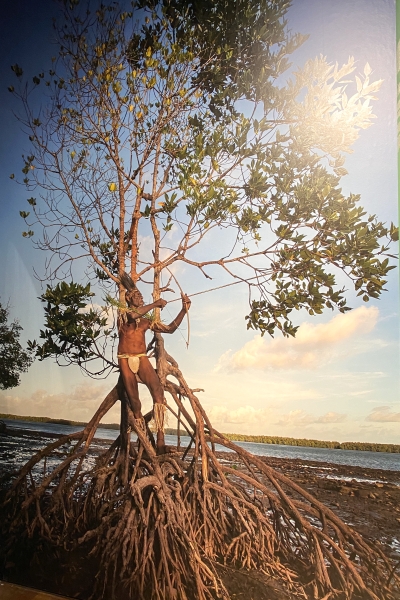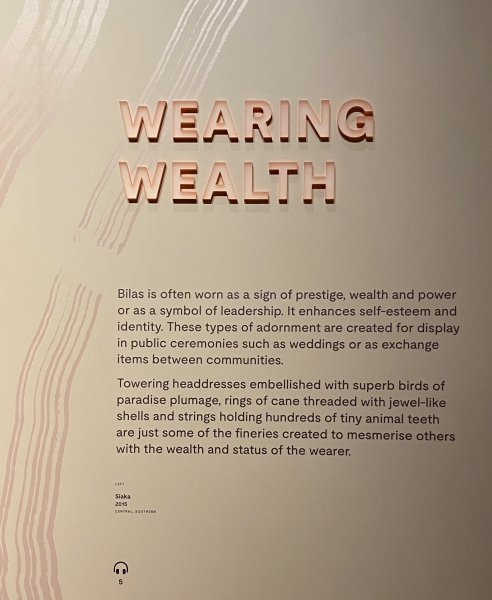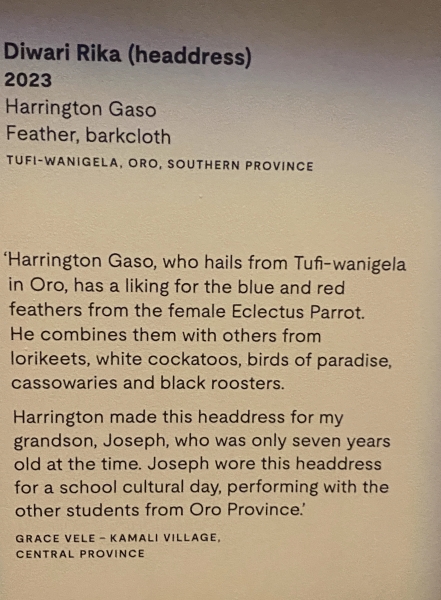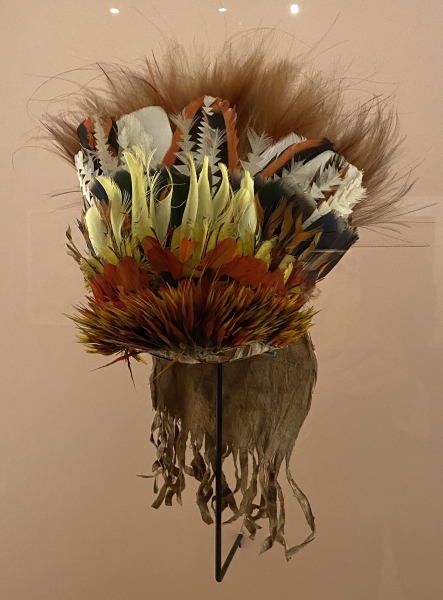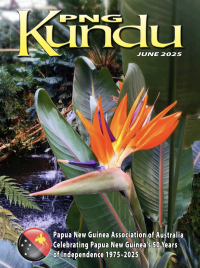Visit to Bilas Exhibition, Australian Museum, Sydney
Visit to Bilas Exhibition, Australian Museum, Sydney
A group of Papua New Guinea Association of Australia members and friends visited the Bilas Exhibition at the Australian Museum on 27 September 2023. The group were fortunate to be guided by the knowledgeable Steven Gagau, who had also been part of the team instrumental in curating this wonderful cultural exhibit which features photos by Wylda Bayrón.
As our group journeyed through, memories of special occasions, artifacts and places prompted stories that bound our shared history and highlighted the joy of gathering together. Our understanding of intricate details was enriched by Steven’s explanations. We absorbed the differences in Bilas that have emerged over the years as the natural environment has changed, requiring adaptation, yet maintaining unchanged tradition which reaches through the generations.
Everyone present enjoyed this visit greatly and appreciated Steven’s guidance.
Steven Gagau has also done some fascinating short audios about Bilas and traditional PNG culture which were truly worth listening to – they have been available at:
https://australian.museum/visit/audio-tours/bilas/
Andrea Williams
BILAS EXHIBITION – Information
The rich, cultural heritage of the communities in PNG was recently showcased in a multimedia exhibition, Bilas, held from 9 June 2023 to 2 October 2023 at the Australian Museum in Sydney. Bilas is a powerful and integral part of PNG culture, and the exhibition highlighted its unique connection to the community’s homelands by exploring the transformation of the human body as an art form.
Decorating the body fulfils everyday physical, social and spiritual needs. Bilas is worn in celebrations, special events, festivals or performances. It transforms the body, symbolises personal status, and brings prestige to a community.
Dr Michael Mel, co-curator of Bilas, and a proud member of the Kilipika Village, Mt. Hagen, Western Highlands, said that PNG’s astonishing natural environment has provided abundant food, cultural and spiritual resources to First Nations communities for over a millennium. Michael Mel said that the body in PNG culture has always held deep meaning.
“Bilas translates to body adornment in Tok Pisin – an official language used throughout PNG. In our culture, the body has long served as a ‘canvas’ for self-expression and to convey a multitude of messages to the outside world. Beyond being a vehicle for social communication and living art, there are also spiritual domains and meanings to the body adornment,” Mel said.
“Our connection with everything living is innate to us. It is through the domain of the natural world that the spirits and our ancestors supply us with cosmological and spiritual knowledge, prosperity, balance and materials to decorate our bodies and beyond. Adorning the body with a feather or skin from the natural world activates a metamorphosis within us, and thus we become a living embodiment of the living environment,” Mel explained.
Bilas featured rare, never before displayed cultural objects from the Australian Museum’s Pacific collection including photography by photographer Wylda Bayron and natural history specimens.
Australian Museum Director and CEO, Kim McKay AO, said Bilas is a showcase for both the museum’s Pacific collections and the strength of its engagement with Pacific communities.
President of Sydney Wantok Association, Steven Gagau, from Viviran Village, Toma, East New Britain Province, played an integral part in the curation of Bilas.
“The PNG diaspora community acknowledges its heritage collections at the Australian Museum and through this exhibition, we are looking forward to showcasing these collections and the new objects created especially for Bilas by community groups from PNG,” Gagua said.
Bilas was supported by BSP Financial Group as part of its support of PNG cultural activities, and through the generous funding from the Australian Museum Foundation.
Words from the Bilas Exhibition:
Bilas: Living Culture
Decorating the body fulfils everyday physical, social and spiritual needs. Bilas is worn in celebrations, special events, festivals or performances. It transforms the body, symbolises personal status, and brings prestige to a community.
Fashioning objects of value using natural resources illustrates the great respect Papua New Guineans have for the environment, and its spiritual significance. Bilas illustrates the unique interconnection of peoples to place, to the environment and to all things living.
Living Landscape
Peoples, land and Ancestors interweave with each other. Waterways, forests and mountains shape beliefs, identities, cultures and social values.
Peoples are connected to the living environment. It is the natural world – the animals, insects, trees, seeds, flowers and waterways – that provides the spiritual knowledge and materials, and inspires the patterns and designs for adorning the body.
Connection with everything living is innate to the peoples of Papua New Guinea. The land, sky and water, along with their inhabitants, have a lifeforce.
Balance and Beauty
Enamelled birds of paradise plumes, iridescent green scarab beetles, burnished pearl shells, soft cuscus furs and fragrant ferns are just some of the materials collected from the natural environment to create intricate and impressive pieces of bilas.
When adorned, bodies are transformed from ordinary to sublime, becoming embodiments of the living environment.
Distinct and Diverse
Bilas is a practice made possible by many hands, from material collection to performance. It is a collective experience based on sharing time, resources and knowledge. From the start of life to the end of life, these processes form a basis for building and cementing relationships within and between communities.
Wearing Wealth
Bilas is often worn as a sign of prestige, wealth and power or as a symbol of leadership. It enhances self-esteem and identity. These types of adornment are created for display in public ceremonies such as weddings or as exchange items between communities.
Enduring Connections
Despite the many different communities, languages and cultures of Papua New Guinea, there is an underlying unity in the way Ancestors are revered. There is no division between the tangible and the intangible. Powers of Ancestors exist and exert influence throughout all things – above and below the ground and in the rivers and the sea. Everything, living or dead, has a spiritual essence that is acknowledged and celebrated, including the materials, patterns and designs people use to decorate their bodies.
Bilas worn in ceremonial life celebrates, re-ignites and enhances the connection between the living, the natural environment, and Ancestors, enabling their stories and legacies to endure across generations.

